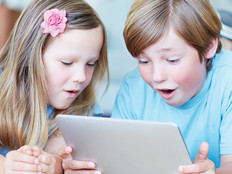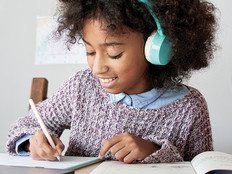Global Collaboration and Learning
Today’s students face a future where boundaries are abstract and global learning is critical. Tomorrow’s citizens must be global communicators, must be able to participate successfully in project-based activities, and must have collaborative skills.
As a result of Thomas Friedman’s book The World Is Flat and Daniel Pink’s book A Whole New Mind, educators have gained a new perspective on what is important for education as they teach students skills for success in the 21st century. Phrases such as “global education” and “global citizenship” are being used incessantly, yet what does all of this really mean for student learning?
The global marketplace and the workplace in which today’s students will be involved are rapidly changing. Most jobs they will have in the future don’t exist today. With the increased focus on outsourcing and global competition, students must be prepared to compete and succeed by using creativity and ingenuity, and they must be able to work with people from all parts of the world.
Knowledge of other cultures around the world leads students to understanding and compassion. That, in turn, creates students who take action to make a difference in resolving problems and changing the world to be a better place.
Changing Curricula
Through global activities, standard curricula are transformed into engaging projects with real-world applications and service learning opportunities. These types of projects promote creativity, address all learners, provide success for all students, make content meaningful, provide an authentic audience, motivate students and empower students to make a difference.
Technology can be used to promote global learning, provide cultural understanding and build relationships. Educators need to find ways to connect students from different parts of the world so that they can learn together, share knowledge and develop cultural understanding and relationships. Through these types of learning experiences, students will increase their global awareness and understanding of other cultures in different parts of the world. These learning experiences can best be conducted by using technology for teaching and learning.
Some ways in which technology can be applied in global projects are:
E—Mail: Students can communicate with partner groups using e-mail. Although e-mail provides quick transmission of messages, teachers should keep in mind that students also like to exchange items with their partner groups, too, so snail mail is still a valid method of collaboration and exchange.
Digital Photography and Digital Storybooks: Students can capture the essence of their lives with photos that can be exchanged electronically, uploaded to Web sites, posted in galleries, or published into books that can be shared. These photos could either tell the story of the culture in which the students live, or share information about an issue that both partner organizations are studying.
Digital Video and Digital Storytelling: Students can create videos of the environment in which they live, work, learn and play as well as scenes from their community. Then, those digital documentaries can be exchanged with partner schools.
Instant Messaging: Students can use instant messaging programs to quickly exchange information with students in other parts of the world. Guided and supervised instant messaging that is purposeful can provide an excellent and immediate method of communicating with partner groups.
Blogs and Forums: Students can post topics and respond to them as well as add new topics through blogs and forums.
Wikis: Students can collaborate and edit common documents that are posted in wikis.
Web Sites: Students can collaborate on the creation of a Web site on which they can communicate and share information. Collaborative projects can be published on a Web site, then shared globally.
Podcasts: Students can create podcasts to distribute and share information globally. Photos and videos can be combined with audio files and distributed through podcasting, and the information can be viewed on any computer or easily downloaded to an iPod for viewing.
Videoconferencing and Web Cameras: Students can communicate in “real time” with live camera connections through either a full videoconferencing system or a Web cam. Building relationships and communicating are greatly enhanced with live camera interactions.
Global Dreamers
Five years ago, Israeli teacher Marsha Goren was looking for a way to improve her students’ interest in English. After creating a variety of ways for her students in grades five through 12 to share thoughts and ideas with students in 37 different countries, she has succeeded.
Goren’s students have created a WebQuest about Israel, a number of discussion groups, group projects and even a place where students can share pictures of one another. These global projects multiply every year and caused Goren to say, “I believe [my students] have become better citizens as they have learned about different cultures. They have improved in all language areas. Their oral skills have improved because of the presentations they give in class.”
Her work at the Ein Ganim Elementary School in Petach Tikva, Israel, earned Goren the Global SchoolNet Online Shared Learning award.
Reed’s Resources
Starting a global project can seem like such a large task, it is hard to know where to begin. After determining what type of project you want to create, you can use this list of resources to help find a partner:
- TakingITGlobal’s TIGed, www.takingitglobal.org/tiged
- Global SchoolNet Foundation, www.globalschoolnet.org
- ePals, www.epals.com/
- My Wonderful World, www.mywonderfulworld.org
- One World Youth Project, www.oneworldyouthproject.org
- Global Learning, www.globalawareness.com
- Global Education Collaborative, globaleducation.ning.com







